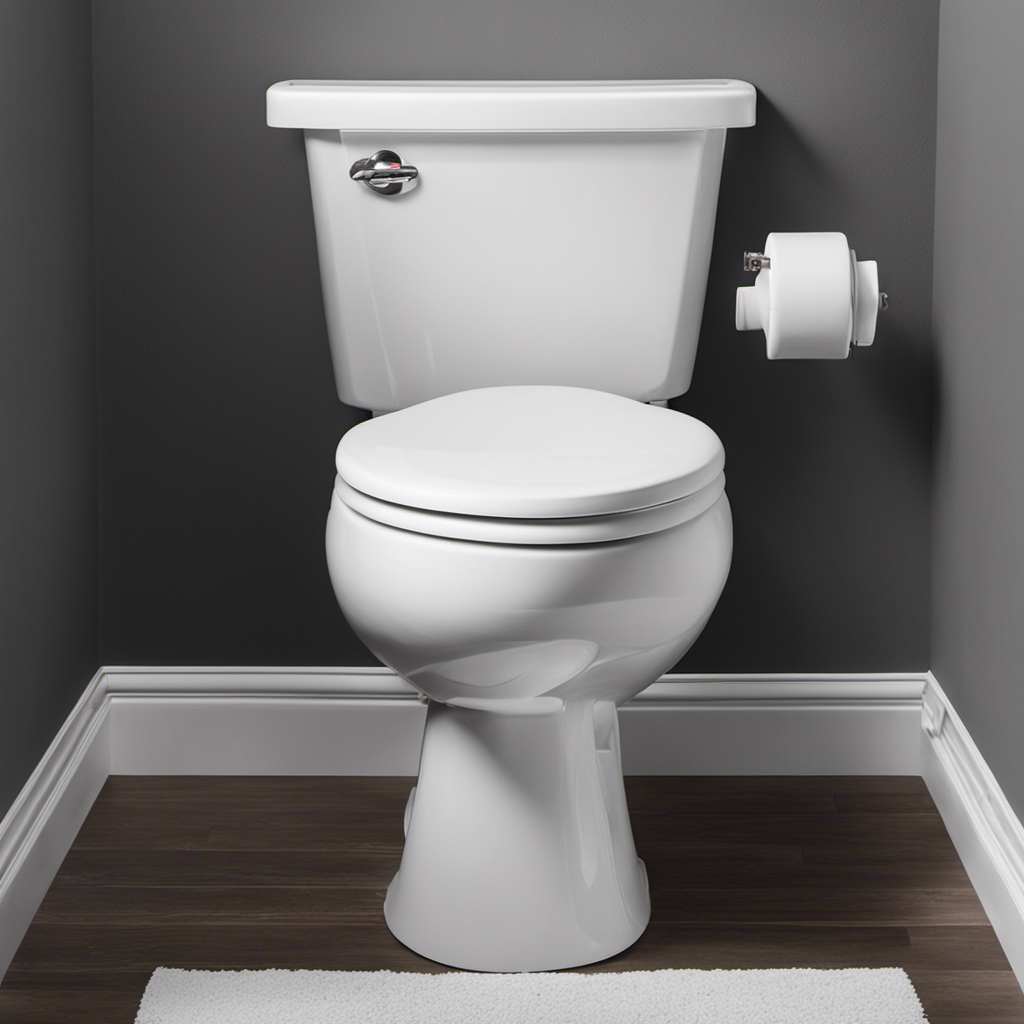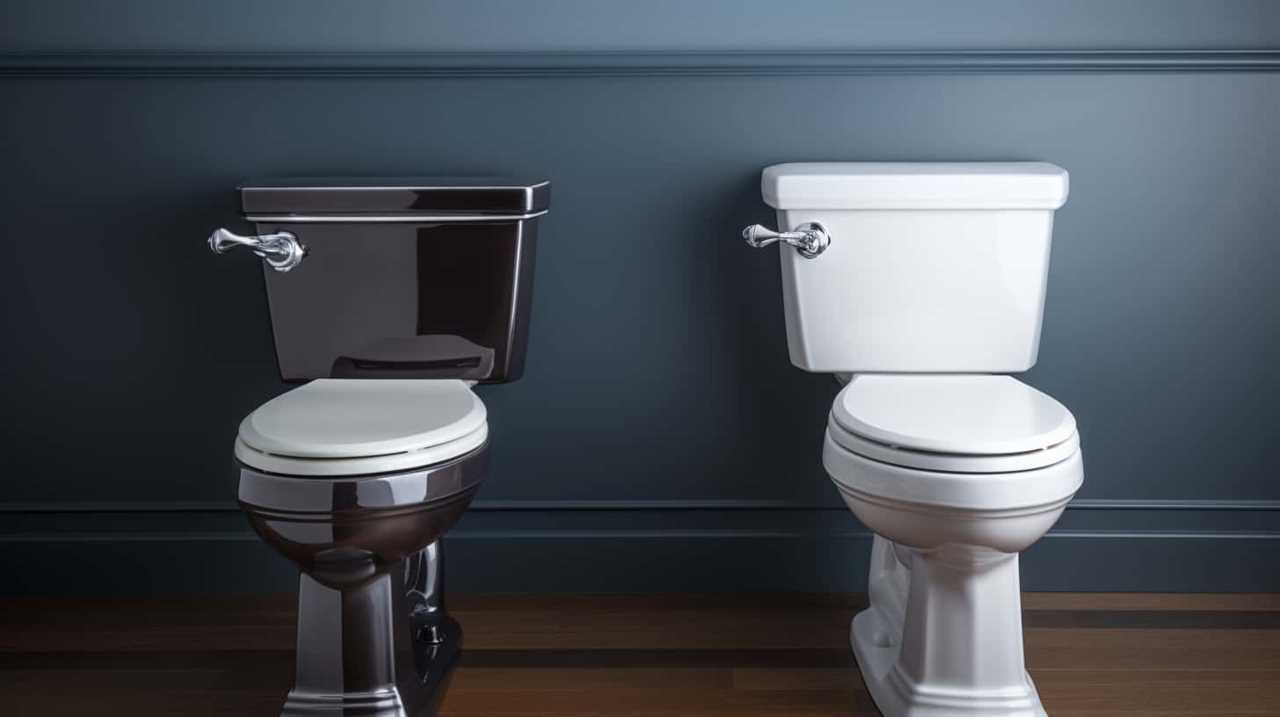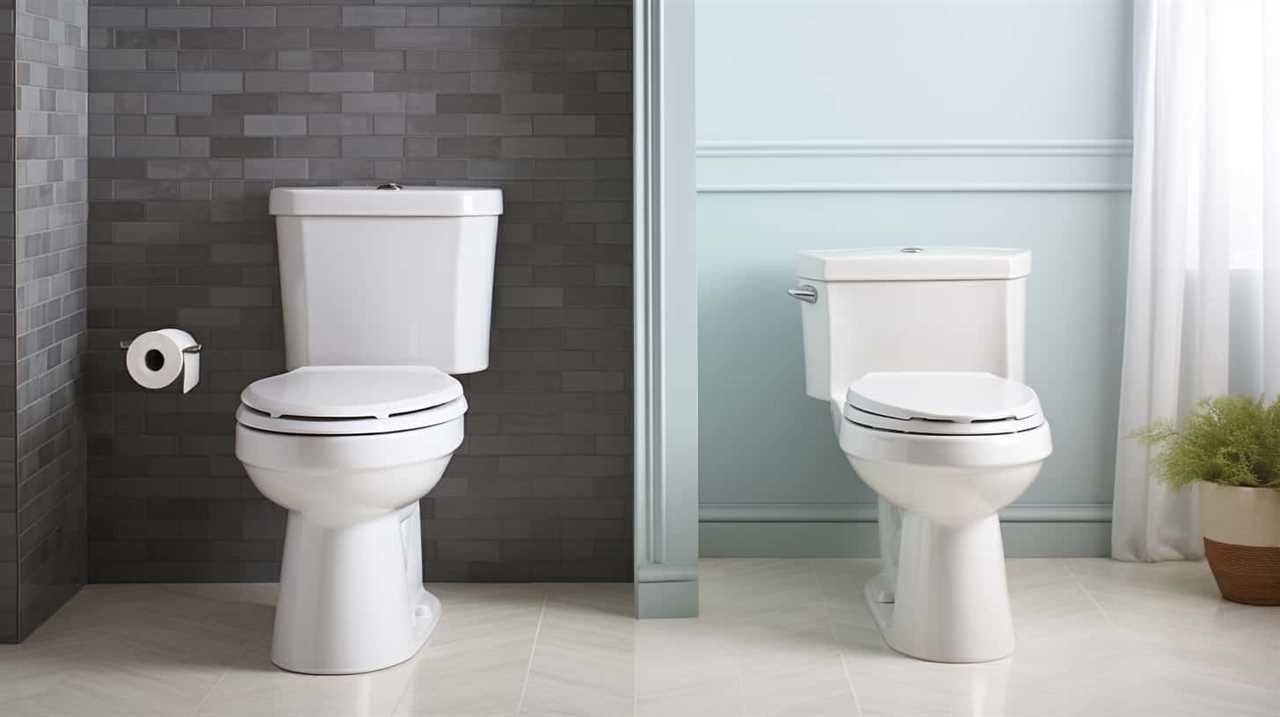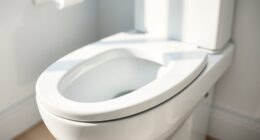Have you ever experienced the annoyance of a toilet that refuses to flush? We’ve all been in that situation, frantically looking for a resolution.
Well, fear not, because we’ve got you covered. In this step-by-step guide, we’ll show you exactly how to take control and get that stubborn toilet flushing again.
From checking the water supply to adjusting the flapper, we’ll walk you through each technique, ensuring you have the mastery to tackle any flushing issue with confidence.
Key Takeaways
- Checking the water supply is crucial to ensure proper functioning of the toilet.
- Clearing clogs can be done using a plunger and adding water to increase pressure.
- Adjusting the flapper is important to ensure proper flushing.
- If the flush valve is cracked or damaged, it should be repaired or replaced.
Check the Water Supply
To check the water supply, we need to ensure the toilet tank is receiving an adequate amount of water. Troubleshooting techniques can help identify and resolve any water pressure issues that may be affecting the flushing mechanism.

Here’s how to do it:
- Start by removing the toilet tank lid and locating the fill valve. This valve controls the flow of water into the tank.
- Check the water level in the tank. It should be approximately 1 inch below the top of the overflow tube. If it’s too low, adjust the fill valve by turning the adjustment screw clockwise to increase the water level.
- If the water pressure is low, check the shut-off valve located behind the toilet. Make sure it’s fully open to allow maximum water flow.
- Inspect the supply line for any kinks, leaks, or blockages. Replace or repair as necessary.
Clear Any Clogs
To clear any clogs, we can use a plunger to apply pressure and dislodge any obstructions in the toilet drain. This is one of the most common and effective unclogging techniques used by professionals.
Here’s a step-by-step guide on how to use a plunger:
- Position the plunger over the toilet drain, making sure it covers the entire opening.
- Apply downward pressure and then quickly pull up to create suction.
- Repeat this plunging motion several times, making sure to maintain a tight seal between the plunger and the drain.
- If the clog doesn’t clear after a few attempts, add some water to the bowl to increase the pressure.
- Once the clog is dislodged, flush the toilet to ensure proper drainage.
Adjust the Flapper
We can adjust the flapper to troubleshoot a toilet that doesn’t flush. The flapper is a rubber valve that opens and closes to allow water to flow from the tank into the bowl. If the flapper isn’t properly adjusted, it may not create a tight seal, causing water to continuously leak from the tank into the bowl.

To adjust the flapper, follow these steps:
- Lift the lid of the toilet tank and locate the flapper.
- Check if the flapper is properly aligned with the flush valve opening.
- If the flapper is misaligned, adjust it so that it covers the flush valve completely.
- Test the flush by pressing the flush lever and observing if the flapper seals properly.
If adjusting the flapper doesn’t solve the flushing issue, it may be necessary to consider flapper replacement or other flapper adjustment techniques. This will be discussed further in the next section, ‘Replace or Repair the Flush Valve.’
Replace or Repair the Flush Valve
For replacing or repairing the flush valve, our next step is to assess the condition of the valve and determine the necessary course of action. Here are the common flush valve issues and the options for resolving them:
- Leaking flush valve:
- Repair: Check the seal and replace if cracked or damaged.
- Replace: If the valve is old or worn out, replacing it’s a more effective solution.
- Malfunctioning flush valve:
- Repair: Clean the valve and remove any debris or buildup that may be causing the issue.
- Replace: If the valve is irreparable or consistently malfunctioning, replacement is recommended.
- Noisy flush valve:
- Repair: Tighten loose parts and ensure proper alignment to minimize noise.
- Replace: If the valve continues to make excessive noise, consider replacing it for a quieter operation.
Call a Professional Plumber
If you’re unable to resolve the issue with your toilet’s flush valve on your own, it may be necessary to call a professional plumber. While DIY troubleshooting techniques can be effective, sometimes a malfunctioning toilet requires the expertise of a trained professional. Signs of a malfunctioning toilet include weak flushes, constant running water, or complete failure to flush. Calling a professional plumber ensures that the problem will be diagnosed accurately and fixed efficiently. Below is a table outlining the benefits of calling a professional plumber:

| Benefits of Calling a Professional Plumber | |
|---|---|
| Expertise | Professional plumbers have the knowledge and experience to identify and fix complex toilet issues. |
| Time-saving | Hiring a professional saves you time and effort, as they can quickly diagnose and repair the problem. |
| Long-term solution | Professional plumbers provide lasting solutions, preventing recurring issues and future breakdowns. |
Frequently Asked Questions
Can I Use Any Type of Plunger to Clear a Clog in My Toilet?
To unclog a toilet, different types of plungers can be used. To properly use a plunger, first ensure a tight seal around the drain. Then, vigorously push and pull the plunger to create suction and dislodge the clog.
How Do I Know if the Flapper in My Toilet Needs Adjusting?
To troubleshoot a toilet flush, start by checking if the flapper needs adjusting. This can cause insufficient water flow. Lift the lid, locate the flapper, and adjust the chain length accordingly.
What Are Some Common Signs of a Faulty Flush Valve?
Common signs of a faulty flush valve include weak flushing, incomplete flushing, and water constantly running in the toilet bowl. To troubleshoot a toilet that doesn’t flush, check the flapper, water level, and flush handle.
Are There Any Alternative Methods to Clear a Clog in a Toilet Besides Using a Plunger?
To unclog a toilet without a plunger, try alternative methods like using a toilet auger or a mixture of hot water and dish soap. These DIY techniques can help clear the clog effectively.

Can I Replace the Flush Valve in My Toilet Myself, or Do I Need to Hire a Professional Plumber?
When it comes to DIY toilet repairs, replacing a flush valve can be done by a homeowner with the right tools and knowledge. Pros include cost savings, but cons include potential complications.
Conclusion
So the next time you encounter a toilet that doesn’t flush, don’t panic! By following these simple steps, you can easily troubleshoot and fix the problem yourself.
Remember to check the water supply, clear any clogs, adjust the flapper, and if necessary, replace or repair the flush valve.
And if all else fails, don’t hesitate to call a professional plumber.

Now, who knew fixing a toilet could be so satisfying?










